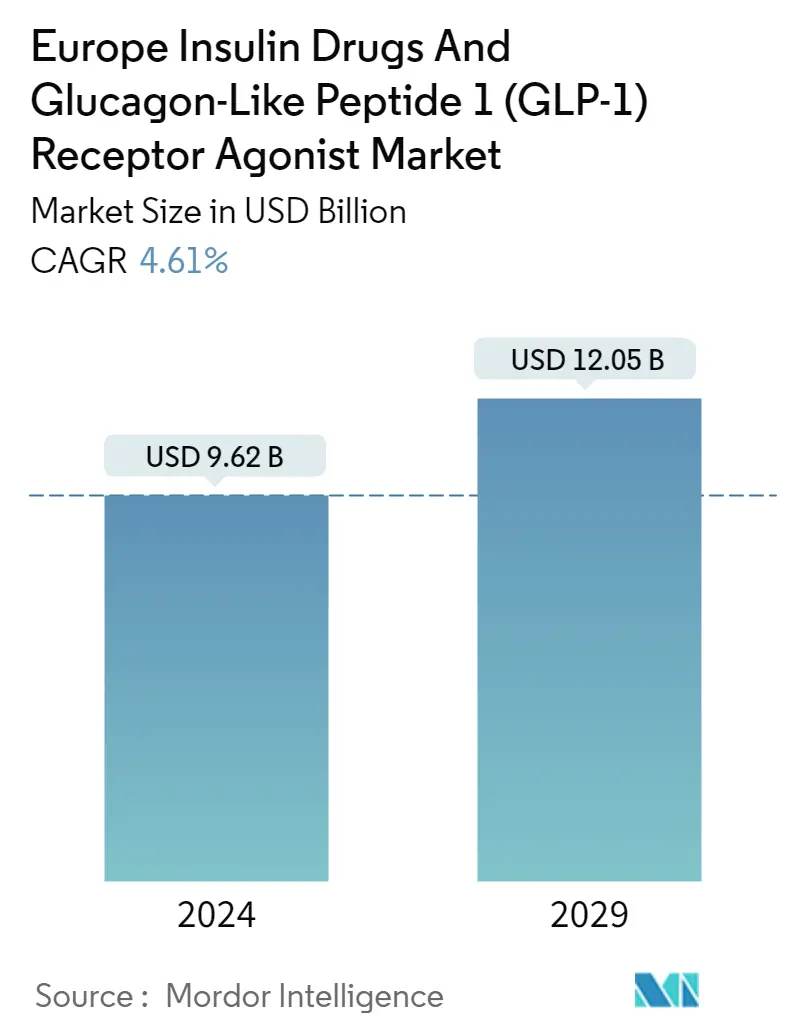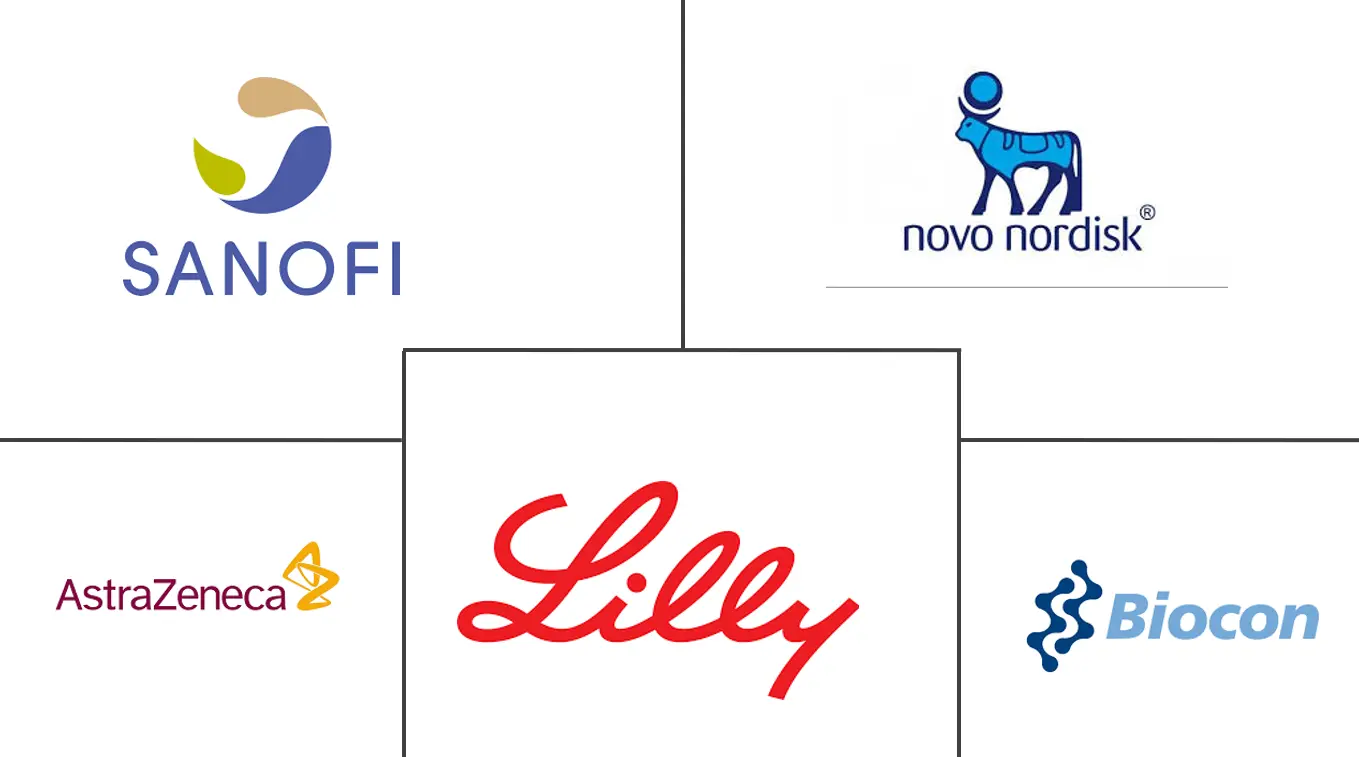Market Size of Europe Insulin Drugs And Glucagon-Like Peptide 1 (GLP-1) Receptor Agonist Industry

| Study Period | 2019 - 2029 |
| Base Year For Estimation | 2023 |
| Forecast Data Period | 2024 - 2029 |
| Market Size (2024) | USD 9.62 Billion |
| Market Size (2029) | USD 12.05 Billion |
| CAGR (2024 - 2029) | 4.61 % |
Major Players
*Disclaimer: Major Players sorted in no particular order |
Need a report that reflects how COVID-19 has impacted this market and its growth?
Europe Insulin Drugs and Glucagon-Like Peptide 1 (GLP-1) Receptor Agonist Market Analysis
The Europe Insulin Drugs And Glucagon-Like Peptide 1 Receptor Agonist Market size is estimated at USD 9.62 billion in 2024, and is expected to reach USD 12.05 billion by 2029, growing at a CAGR of 4.61% during the forecast period (2024-2029).
The COVID-19 epidemic has significantly affected the market for insulin drugs and devices. Patients with type-1 diabetes are more affected by COVID-19. Since people with diabetes already have weakened immune systems, COVID-19 causes those immune systems to deteriorate rapidly. Those with diabetes are more likely to experience significant complications than healthy persons. During COVID-19, the manufacturers of insulin drugs worked with local governments to provide insulin drugs to diabetes patients.
NovoNordisk stated on their website that 'Since the start of COVID-19, our commitment to patients, our employees and the communities where we operate has remained unchanged, we continue to supply our medicines and devices to people living with diabetes and other serious chronic diseases, safeguard the health of our employees, and take actions to support doctors and nurses as they work to defeat COVID-19.' Doctors around the world suggested diabetes patients check their diabetes levels more often to be careful and the intake of medicine has increased, which lead to an increase in the usage of insulin drugs.
The rates of newly diagnosed Type 1 and Type 2 diabetes cases are seen increasing among the youth in Europe. The prevalence of diabetes among all ages in the European region is increasing, mainly due to obesity, unhealthy diet, and physical inactivity. The prevalence of autoimmune Type 1 diabetes is also increasing in Europe, and as per sources, Europe has the highest number of children with Type 1 diabetes. Though Type 2 patients are initiated with oral drugs, insulin may also be required when glucose levels are not well controlled due to an unhealthy lifestyle. Thus, the demand for insulin also exists among Type 2 diabetes patients.
Each drug is unique in the way it works in helping patients with diabetes to keep their condition under control. Certain drugs have similar actions, and they are grouped in the same class. They can also be classified in the way they are administered, with some medicines taken orally and others injected directly into the blood (insulin and GLP-1).
Byetta was the first GLP-1 that received approval in 2005. The glucagon-like peptide receptor agonist is administered subcutaneously and is used by Type 2 diabetes patients to control their blood glucose levels.
The rapidly increasing incidence and prevalence of diabetic patients and healthcare expenditure in Europe are indications of the increasing usage of diabetic drug products. Therefore, owing to the aforementioned factors the studied market is anticipated to witness growth over the analysis period.
